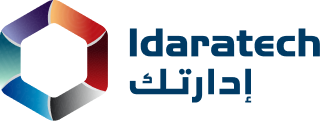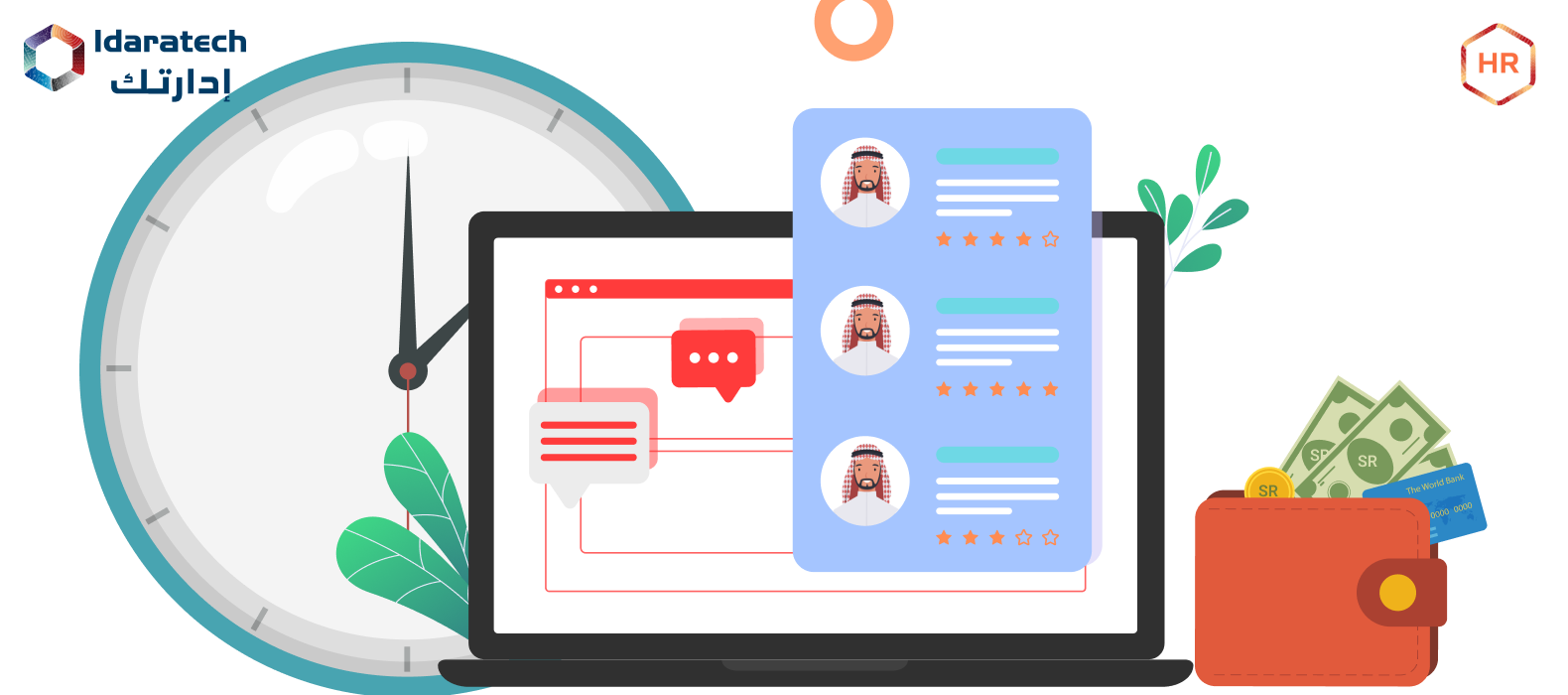HR software has developed into a crucial tool for contemporary enterprises, providing a wide range of features and functionalities that can help streamline HR procedures, enhance productivity, and save priceless time and resources. This software has become an essential investment for businesses of all sizes because of the rising complexity of HR operations and the requirement for compliance with labor laws and regulations.
HR software may considerably help companies save costs and improve operational efficiencies by automating repetitive HR operations, cutting errors, enhancing communication, and offering data-driven insights. This introduction will discuss the benefits of the software for your business regarding time and money savings and why HR professionals need it to manage their workforces efficiently.
What is the Meaning of HR Software?

“HR software” is specialized software that streamlines and automates HR-related business duties and processes. It includes numerous tasks like managing employee data, payroll, and benefits, onboarding new hires, managing performance, tracking time and attendance, complying with regulations, and reporting.
This software helps companies streamline administrative burdens, increase productivity, and reduce administrative costs. It enables HR professionals to concentrate on strategic objectives while guaranteeing adherence to labor rules and regulations. The software is made to improve productivity, accuracy, and compliance when managing the many facets of human resources inside an organization.
7 Ways HR Software Saves Time and Money

HR software provides many opportunities to save time and money by automating HR duties, streamlining procedures, boosting self-service capabilities, enhancing compliance and reporting, allowing communication and collaboration, increasing accuracy, and enabling data-driven decision-making. Organizations can increase productivity, accuracy, and cost savings by optimizing HR operations, freeing HR staff to concentrate on key business-critical strategic objectives.
1. Automating HR tasks:
Routine HR tasks, like data input, record-keeping, and payroll processing, are automated by HR software. It can, for instance, produce pay stubs, update personnel data, and automatically determine wages, taxes, and deductions. Automating repetitive operations removes the need for manual data entry, lowers the possibility of errors, and saves time.
2. Streamlining HR processes:
HR software offers a central database for handling various HR functions, including managing employee data, benefits administration, hiring, onboarding, performance management, and time and attendance tracking. Doing so removes the necessity for several spreadsheets or labor- and error-intensive paper-based procedures. HR professionals may access and handle all HR-related duties in one location using this software, creating streamlined and effective HR procedures.
3. Enhancing self-service capabilities:
Many HR software solutions have self-service portals enabling employees to access and update their information, request time off, and enroll in benefits. Employees are given the autonomy to conduct their HR-related responsibilities independently, eliminating the requirement for HR staff to handle regular employee questions and administrative tasks. As a result, HR staff may spend less time on administrative tasks and concentrate on more strategic projects. At the same time, employees have more freedom and convenience in handling their HR-related demands.
4. Enhancing compliance and reporting:
By automating record-keeping, creating reports, and allowing audits, HR software helps businesses in complying with labor laws and regulations. For instance, it can automatically handle employee information, benefits eligibility, and accrued vacation time while guaranteeing compliance with applicable rules and regulations. Doing this decreases the possibility of penalties and fines for non-compliance, saving funds and resources that would otherwise be used for legal challenges or fines.
5. Enhancing communication and cooperation:
HR software frequently incorporates communication and collaboration capabilities that simplify HR procedures, such as automatic notifications for employee assessments, performance feedback, and benefits registration. These solutions enhance communication between HR representatives, staff members, and managers, reducing delays and guaranteeing timely HR procedures. Automated notifications, for instance, can remind managers and HR staff about future HR responsibilities, lowering the possibility that important dates will be forgotten and promoting effective HR procedures.
6. Increasing accuracy and decreasing errors:
Human error is reduced to a minimum in HR activities, including data input, payroll computations, and benefits administration, thanks to HR software. Manual data entry is prone to mistakes, including typos, wrong calculations, and data discrepancies, leading to expensive errors like overpayments, underpayments, or improper benefit enrollment. Automating these procedures with this software lowers the chance of errors, ensures accuracy in HR data and computations, and can help you save money and resources by eliminating costly errors.
7. Data-driven decision-making
Making data-driven decisions is easier due to HR software, which gives users access to detailed HR analytics and statistics on employee performance, employee turnover, and benefit usage. This information can be utilized to make data-driven decisions and implement plans to improve HR procedures and expenses.
For instance, this software can produce reports and analytics that offer insights into employee performance, attrition trends, and benefit utilization, assisting HR managers in identifying areas for improvement and putting strategies into place to optimize HR procedures and expenses. Organizations may streamline HR processes, cut costs, and enhance overall HR performance by making data-driven decisions.
HR Software is Important to Save Time and Money

By automating HR tasks, streamlining processes, lowering errors, ensuring compliance, enhancing self-service capabilities, enhancing communication and collaboration, enabling data-driven decision-making, and offering scalability and flexibility, HR software is crucial in helping organizations save time and money.
Organizations can increase productivity, accuracy, and cost savings by optimizing their HR operations, allowing them to concentrate on strategic HR activities that support their company’s growth. The software automates common HR duties, streamlines procedures, and eliminates manual data entry, reducing the time and effort required for administrative tasks.
As a result, HR employees may concentrate on tasks more strategically important to the firm, such as skill management, employee engagement, and workforce planning, which can enhance its general performance and productivity.
1. Error reduction:
HR software reduces the possibility of human error in HR procedures like data entry, computations, and record-keeping. As a result, costly errors, including overpayments, underpayments, and erroneous benefit enrollment, are avoided, preventing financial losses and legal issues. The software enables businesses to conserve funds and resources that would otherwise be used to fix errors or deal with their effects by assuring accurate and trustworthy HR data.
2. Compliance and reporting:
By automating record-keeping, creating reports, and allowing audits, HR software aids businesses in remaining compliant with labor laws and regulations. Doing this decreases the chance of incurring costly and time-consuming penalties and fines for non-compliance. Additionally, this software streamlines the process of creating reports for various HR metrics and analytics, assisting businesses in making data-driven decisions to streamline HR procedures and cut expenses.
3. Self-service capabilities:
Many HR software packages provide self-service portals that let staff members access and update their information, request time off, and enroll in benefits. Employees are given the autonomy to conduct their HR-related responsibilities independently, eliminating the requirement for HR staff to handle regular employee questions and administrative tasks. It also encourages employee participation and self-sufficiency. This saves time.
4. Improved communication and teamwork:
Tools for communication and teamwork are frequently included in HR software, which streamlines HR procedures and permits effective communication between HR staff, employees, and managers. This speeds up HR procedures, increases transparency, and decreases delays. Effective communication and teamwork can save time and money, which can also help avoid misunderstandings, deal with problems quickly, and promote a happy work atmosphere.
5. Making decisions based on data:
Access to complete HR data and analytics is made possible by HR software, which can be utilized to make wise choices and implement plans that will streamline HR procedures and cut expenses. Organizations can use HR data and analytics to find trends, patterns, and areas for development and to inform data-driven decisions that can result in cost savings and improved operational efficiency.
6. Flexibility and scalability:
HR software is created to meet the expanding demands of enterprises, making it scalable and responsive to shifting HR requirements. The software can readily adapt to new personnel, additional HR processes, and changing compliance requirements as organizations expand and change without requiring substantial time and resource commitments. Organizations can save time and money by avoiding expensive software migrations and upgrades because of the scalability and flexibility of the software.
Conclusion
Finally, investing in HR software can save your business considerable time and money. This software can optimize HR operations and free up HR personnel to concentrate on strategic initiatives by automating HR processes, reducing errors, ensuring compliance, promoting self-service capabilities, improving communication and collaboration, enabling data-driven decision-making, and providing scalability and flexibility.
HR procedures may be streamlined, administrative costs can be decreased, and overall productivity can be increased due to HR software’s efficacy, efficiency, and affordability. Consequently, your firm will be able to save time and money and devote important resources to other important components of the organization. HR teams may be more successful, improve employee satisfaction, and contribute to the success of their organizations by using this software as a strategic tool.
FAQ’s
Question 1: How might HR software save time for my business?
HR software automates routine HR tasks, streamlining HR procedures and reducing the need for manual data entry. As a result, HR staff members are freed from time-consuming administrative activities and can concentrate on more strategic projects like talent management, employee engagement, and workforce planning.
Question 2: Does HR software help with decreasing errors and saving money?
HR software can indeed help you save money and cut down on errors. Data entry errors, calculation errors, and errors relating to compliance are all common in manual HR operations. Automating these procedures by this software lowers the likelihood of errors and the associated expenses of overpayments, underpayments, improper benefit enrollment, and fines for noncompliance. This software helps organizations save money that would otherwise be spent on rectifying errors or dealing with the consequences of mistakes by assuring accurate and trustworthy HR data.
Question 3: Is HR software able to help with regulatory and compliance requirements?
Undoubtedly, many HR software packages have capabilities that aid in an organization’s compliance with labor laws, rules, and reporting necessities. This entails keeping personnel data, producing necessary reports, and assuring compliance with laws about labor, taxes, benefits, and workplace safety, in addition to automating the tracking of time and attendance. By automating compliance activities, this software helps companies avoid costly noncompliance fines, penalties, and legal concerns.
Question 4: Is it possible to combine HRM software with other HR and business systems?
Certainly, many HRM software solutions provide integration features with other HR and business systems, including payroll, benefits, talent management, time and attendance, and payroll and benefits. As a result, data silos are eliminated, seamless data transmission is made possible, and HR data accuracy and consistency are guaranteed across all platforms. Data input time and effort are reduced, data inaccuracies are decreased, and a comprehensive view of HR data is provided for informed decision-making by integrating HR software with other systems.

